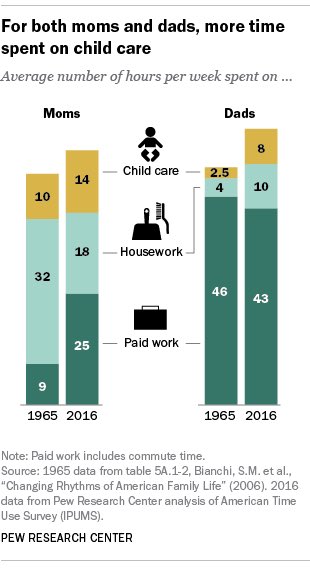
@CarolineGatti3 @SeptimusSulla @Suffragentleman @UN_Women Consider "Intimate terrorism by women towards men: does it exist?" by Denise A. Hines and Emily M. Douglas published in July 2010 in Volume 2, Issue 3, of the _Journal of Aggression, Conflict and Peace Research_ (available at www2.clarku.edu/faculty/dhines…).
@CarolineGatti3 @SeptimusSulla @Suffragentleman @UN_Women "Research showing that women commit high rates of intimate partner violence … against men has been controversial because [intimate partner violence] is typically framed as caused by the patriarchal construction of society and men’s domination over women" (Supra, p. 36).
@CarolineGatti3 @SeptimusSulla @Suffragentleman @UN_Women "The results of this study indicate that the adherence to the theory that patriarchy is the foundation of [intimate terrorism] in Western, developed nations deserves reconsideration."
2 Journal of Aggression, Conflict and Peace Research 54 (2010).
2 Journal of Aggression, Conflict and Peace Research 54 (2010).
@CarolineGatti3 @SeptimusSulla @Suffragentleman @UN_Women The "study shows the existence of male victims of female-perpetrated [intimate terrorism]. These men sustained very high rates and frequencies of psychological, sexual, and physical [intimate partner violence], injuries, and controlling behaviours" (Supra, p. 54).
@CarolineGatti3 @SeptimusSulla @Suffragentleman @UN_Women Note "Differences in Frequency of Violence and Reported Injury Between Relationships With Reciprocal and Nonreciprocal Intimate Partner Violence" by Daniel J. Whitaker, Ph.D.; Tadesse Haileyesus, M.S.; Monica Swahn, Ph.D.; and Linda S. Saltzman, Ph.D. (ncbi.nlm.nih.gov/pmc/articles/P…).
@CarolineGatti3 @SeptimusSulla @Suffragentleman @UN_Women "Differences in Frequency of Violence and Reported Injury Between Relationships With Reciprocal and Nonreciprocal Intimate Partner Violence" was published in May 2007 in Volume 97, Issue 5, of the _American Journal of Public Health_ (available at ncbi.nlm.nih.gov/pmc/articles/P…).
@CarolineGatti3 @SeptimusSulla @Suffragentleman @UN_Women This study "sought to examine the prevalence of reciprocal (i.e., perpetrated by both partners) and nonreciprocal intimate partner violence and to determine whether reciprocity is related to violence frequency and injury."
97 Am. J. Public Health 941 (2007).
97 Am. J. Public Health 941 (2007).
@CarolineGatti3 @SeptimusSulla @Suffragentleman @UN_Women This study found "that among relationships with nonreciprocal violence, women were the perpetrators in a majority of cases, regardless of participant gender… [and] …both men and women reported a larger proportion of nonreciprocal violence perpetrated by women…" (Supra, 944).
@CarolineGatti3 @SeptimusSulla @Suffragentleman @UN_Women This study also found "relationships with reciprocal violence resulted in more frequent violence (by women only) and a greater likelihood of injury caused by both male and female perpetrators."
97 Am. J. Public Health 945 (2007).
97 Am. J. Public Health 945 (2007).
@CarolineGatti3 @SeptimusSulla @Suffragentleman @UN_Women Consider "Rates of Intimate Partner Violence in the United States" by John Schafer, Ph.D.; Raul Caetano, M.D., Ph.D.; and Catherine L. Clark, Ph.D., published in November 1998 in Volume 88, Issue 11, of the _American Journal of Public Health_ (link: ncbi.nlm.nih.gov/pmc/articles/P…).
@CarolineGatti3 @SeptimusSulla @Suffragentleman @UN_Women The study found "5.21% [as the lower bound] and 13.61% [as the upper bound] for male-to-female partner violence, 6.22% and 18.2 1% for female-to-male partner violence, and 7.84% and 21.48% for any partner-to-partner violence."
88 Am. J. Public Health 1703–1704 (2007).
88 Am. J. Public Health 1703–1704 (2007).

@CarolineGatti3 @SeptimusSulla @Suffragentleman @UN_Women "Lower-bound estimates were calculated by counting only those violent behaviors that both partners reported or agreed on. Upper-bound estimates were formed by counting violent occurrences that either partner reported, whether corroborated or not" (supra, pp. 1703–1704).
@CarolineGatti3 @SeptimusSulla @Suffragentleman @UN_Women Moving on from the American case, let's look at Indian case @CarolineGatti3 referenced (
The paper @CarolineGatti3 cited was "A Cross-sectional Study of Gender-Based Violence against Men in the Rural Area of Haryana, India" (ncbi.nlm.nih.gov/pmc/articles/P…).
https://twitter.com/CarolineGatti3/status/1331274590572654592?s=20).
The paper @CarolineGatti3 cited was "A Cross-sectional Study of Gender-Based Violence against Men in the Rural Area of Haryana, India" (ncbi.nlm.nih.gov/pmc/articles/P…).
@CarolineGatti3 @SeptimusSulla @Suffragentleman @UN_Women So let's consider "A Cross-sectional Study of Gender-Based Violence against Men in the Rural Area of Haryana, India" by Jagbir Singh Malik and Anuradha Nadda and published in 2019 in the _Indian Journal of Community Medicine_ (ncbi.nlm.nih.gov/pmc/articles/P…).
@CarolineGatti3 @SeptimusSulla @Suffragentleman @UN_Women "The prevalence of gender-based violence/domestic violence in the present study (52.4%) was less as found by Sarkar et al. (India) where 98% [of] men had suffered domestic violence. This could be due to the difference in methodology and sample selection"(ncbi.nlm.nih.gov/pmc/articles/P…). 

@CarolineGatti3 @SeptimusSulla @Suffragentleman @UN_Women Consider also "Domestic Violence against Men in India: A Perspective" by Anant Kumar published in 2012 in volume 22 of the _Journal of Human Behavior in the Social Environment_ (dx.doi.org/10.1080/109113… | researchgate.net/publication/22…).
@CarolineGatti3 @SeptimusSulla @Suffragentleman @UN_Women "Research in the field of domestic violence has shown that men and women act violently in relationships at about the same rate. Furthermore, men and women are equally likely to instigate violence against one another" (researchgate.net/publication/22…, p. 291). 

@CarolineGatti3 @SeptimusSulla @Suffragentleman @UN_Women It looks like sub-continental Indian men are subject to domestic violence at least as often as American men, if not more depending upon what is considered by the research. Some research finds a lot of physical violence and others find less. There are probably sample size issues.
• • •
Missing some Tweet in this thread? You can try to
force a refresh









